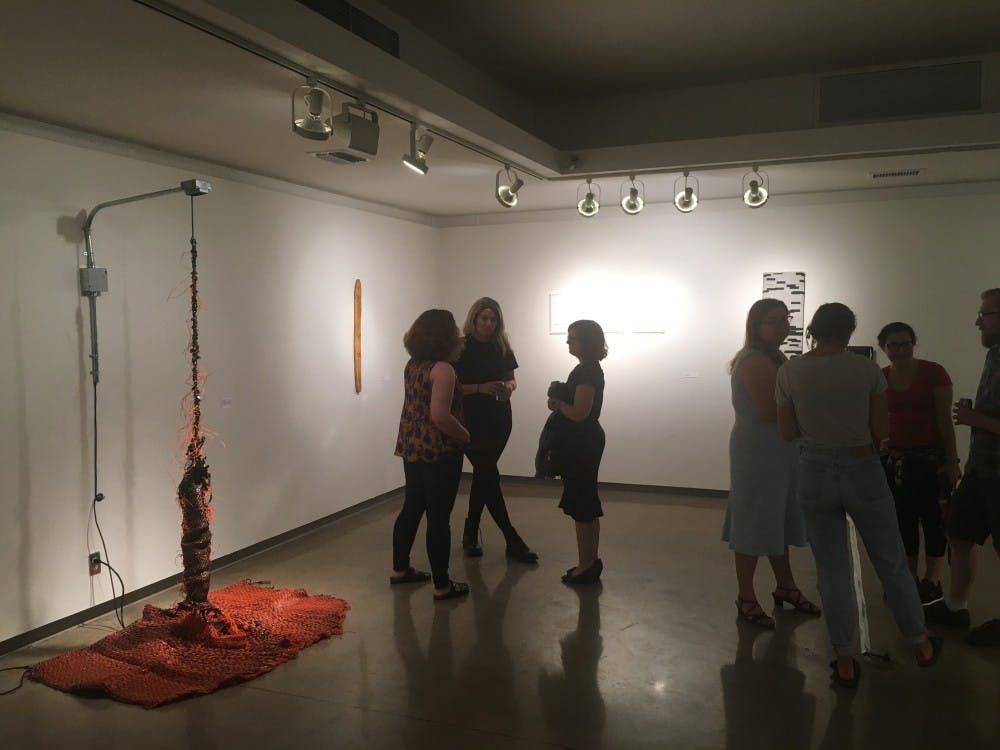An ASU art gallery focused on non-traditional media is stringing together fiber art and technology for a new exhibition.
The Harry Wood Gallery, located inside the art building on ASU’s Tempe campus, is hosting the Mechanization, Material and the Matrix show from Sept. 18 through Sept. 29. The exhibit features the work of 13 artists.
Graduate art students Lena Klett and Shannon Ludington worked together to help create the show. They wanted to “push the boundaries” of fiber art, Ludington said.
Both students are part of the Fiber Arts Network at ASU, an on-campus club for artist interested in fiber, they said.
Traditional fiber work uses cloth or string, but the artists in this show reimagined the medium by incorporating materials like hog gut and human hair.
“We wanted to see how these different things speak to each other," Ludington said.
The pieces also featured elements of technology, like 9-track tape and electrical wire tightly woven together or 3D-printed materials that resemble needlework.
Klett said that working with fiber is just as much about the mindset as it is the material itself.
“Fiber arts at its core is about technology,” Klett said. “Even just a pair of knitting needles is technology.”
Several artists used sound as well, such as Kristen Miologos who, in a piece only available on opening night, played a theremin while knitting.
Graduate art student Anthony Mead has a piece in the gallery made out of oiled paper and wax thread. He said a lot of his work involves screen printing and book work.
Mead said when creating his art he looks for, “ideas of investigation and wonder.” Part of his inspiration for his submission to the gallery was, “how we organize and assign meaning to objects we are unfamiliar with."
Estephania González’s submission to the gallery features a looped video of the border fence along Arizona and Mexico projected onto a display of Plexiglass and string.
She said her piece started out as experimenting with linear and vertical lines.
“I had the video of the fence but wasn’t sure how to use it,” González said. “Then I just starting experimenting to see how depth and lines would affect it.”
Reach the reporter at amckenn2@asu.edu or follow @AndrewMcKenney on Twitter.
Like The State Press on Facebook and follow @statepress on Twitter.




